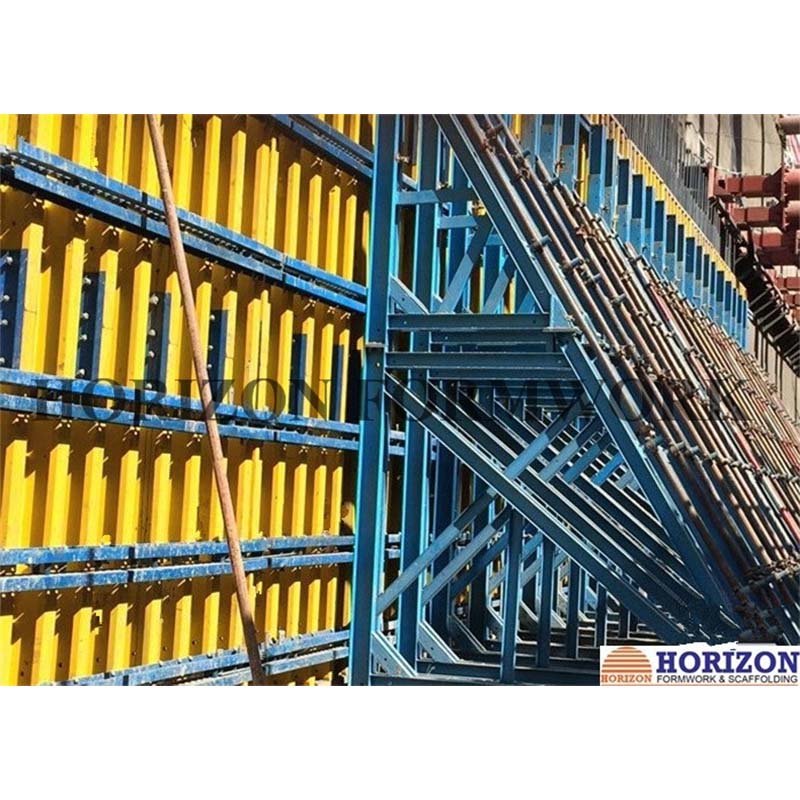វិច្ឆិកា . 07, 2024 17:25 Back to list
Temporary Support Structures for Concrete Construction Businesses
Understanding Falsework for Concrete Companies
Falsework, an essential component in the construction industry, specifically plays a crucial role for concrete companies. It refers to the temporary structures designed to support a building or other construction elements until they can support themselves. While it may seem like a simple yet necessary tool, falsework involves engineering precision, material knowledge, and safety considerations.
What is Falsework?
Falsework is primarily used in the construction of concrete structures such as bridges, arches, and ceilings. It provides the necessary support to hold concrete in place while it cures and gains strength. This temporary structure must be capable of supporting not just the weight of the wet concrete but also any equipment and workers who will be operating on site.
The nature of falsework varies significantly depending on the design of the building or structure. It can include simple frameworks made of wood or metal, or more complex forms with modular systems that can be adjusted to different project specifications. The versatility of falsework systems allows for efficient designs tailored to the unique needs of each project.
Importance of Falsework in Concrete Construction
The use of falsework is vital for several reasons
1. Structural Support Falsework provides the immediate structural support needed during the curing process of concrete. This support is crucial, as freshly poured concrete has not yet achieved its necessary strength and stability.
2. Safety A well-designed falsework system ensures the safety of both workers and the integrity of the building process. If falsework collapses, it can lead to catastrophic failures, causing injury to workers and significant project delays.
falsework for concrete companies

3. Cost-Effectiveness Proper planning and execution of falsework can save concrete companies both time and money. By using effective falsework solutions, companies can minimize delays caused by settling or curing issues.
4. Versatility Different projects require different types of falsework. Companies can adapt falsework systems to meet various project needs, ensuring maximum efficiency and effectiveness.
Key Considerations in Falsework Design
When designing falsework, several factors need to be taken into account
- Load-Bearing Capacity The design must be able to support not only the weight of the cured concrete but also other dynamic loads that might occur during the construction process. - Height and Stability The taller the structure, the more critical the design becomes. Engineers must ensure that the falsework is stable enough to withstand winds, vibrations, and other potential destabilizing forces.
- Material Selection The choice of materials is crucial for the strength and durability of falsework. Common materials include timber, steel, and aluminum. The selection often depends on the required load-bearing capacity, environmental conditions, and budget constraints.
- Compliance with Regulations Every construction project must comply with local building codes and safety regulations. This ensures that the falsework is not only effective but also legal and safe for all personnel involved.
Conclusion
In conclusion, falsework plays an indispensable role in the concrete industry. It acts as a temporary support system that safeguards the construction process, ensuring structural integrity and worker safety. Concrete companies must invest time and resources into effective falsework design and execution to maximize efficiency and minimize risks. By understanding the complexities of falsework, construction teams can streamline their projects and facilitate a smooth transition from temporary structures to permanent concrete installations. As the construction industry continues to evolve, so too will the strategies and technologies surrounding falsework, ensuring that it remains a cornerstone of modern construction practices.
-
Formwork Spring Clamp Factories | Quality & Durable Spring Clamps
NewsAug.31,2025
-
Adjustable Heavy Duty Props for Slab Formwork - Max Load & Safety
NewsAug.30,2025
-
Premium Formwork Wing Nuts & Tie Rods | Factory Supplier
NewsAug.29,2025
-
Expert Ringlock Scaffolding: Durable, Safe, Efficient Solutions
NewsAug.28,2025
-
Ringlock Scaffolding: Strong, Safe & Efficient Solutions
NewsAug.27,2025
-
OEM Column Formwork: Circular, Curved & Inclined Solutions
NewsAug.26,2025